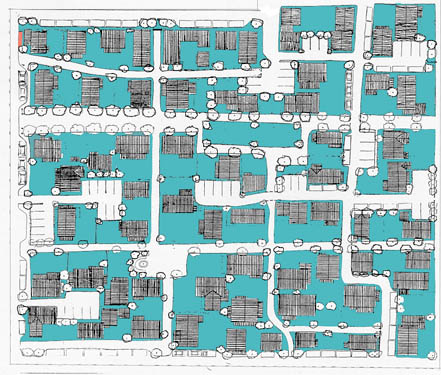1. First: have a look at the whole system of pedestrian paths in the neighborhood, and get an idea what system might be nice.
Imagine the system of paths as a beautiful center, positive and living.
2. In particular, get a general idea where a central focus of pedestrian life might be, possibly a place with a green or a small park, perhaps even water.
To visualize the central green or park establish in your mind's eye, a possible position of such a place.
3. Try to imagine in very general terms, how paths might go to and from this central place, and how the paths might form a connected system in the neighborhood.
For convenience, you may find it helpful to express this in a few lines which you can talk about with neighbors.
4. Please note this set of ideas about the whole are only meant to be general ideas, whose purpose is to orient and support the whole, and to help you, later, create useful piecemeal actions which will gradually build some kind of whole over time. But the whole you envisage is NOT meant to be considered as a plan, and it is not meant to be a kind of scheme which you will later try to implement. It is far more a "feeling".


